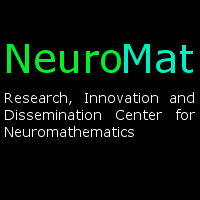Abbreviation NeuroMat Founded 2013 | Formation 2013 Region served Worldwide | |
 | ||
Purpose Integrate mathematical modeling and theoretical neuroscience Similar São Paulo Research Foundation, Insper, Open Rights Group, SENAI, Open Knowledge International | ||
Neuromat young researchers meeting
The Research, Innovation, and Dissemination Center for Neuromathematics (RIDC NeuroMat, or simply NeuroMat) is a Brazilian research center established in 2013 at the University of São Paulo that is dedicated to integrating mathematical modeling and theoretical neuroscience. Among the core missions of NeuroMat are the creation of a new mathematical system to understanding neural data and the development of neuroscientific open-source computational tools, keeping an active role under the context of open knowledge, open science and scientific dissemination. The research center is headed by Prof. Antonio Galves, from USP's Institute of Mathematics and Statistics, and is funded by the São Paulo Research Foundation (FAPESP). Other names related to NeuroMat are the co-principal investigators Pablo Ferrari and Yoshiharu Kohayakawa; Béla Bollobás, Michael Merzenich and Wojciech Szpankowski as members of the International Advisory Board and also Ernst W. Hamburger, the former director of scientific dissemination.
Contents
Research
NeuroMat has been involved in the development of what has been called the Galves-Löcherbach model, a model with intrinsic stochasticity for biological neural nets, in which the probability of a future spike depends on the evolution of the complete system since the last spike.[1] This model of spiking neurons was developed by mathematicians Antonio Galves and Eva Löcherbach. In the first article on the model, in 2013, they called it a model of a "system with interacting stochastic chains with memory of variable length.
